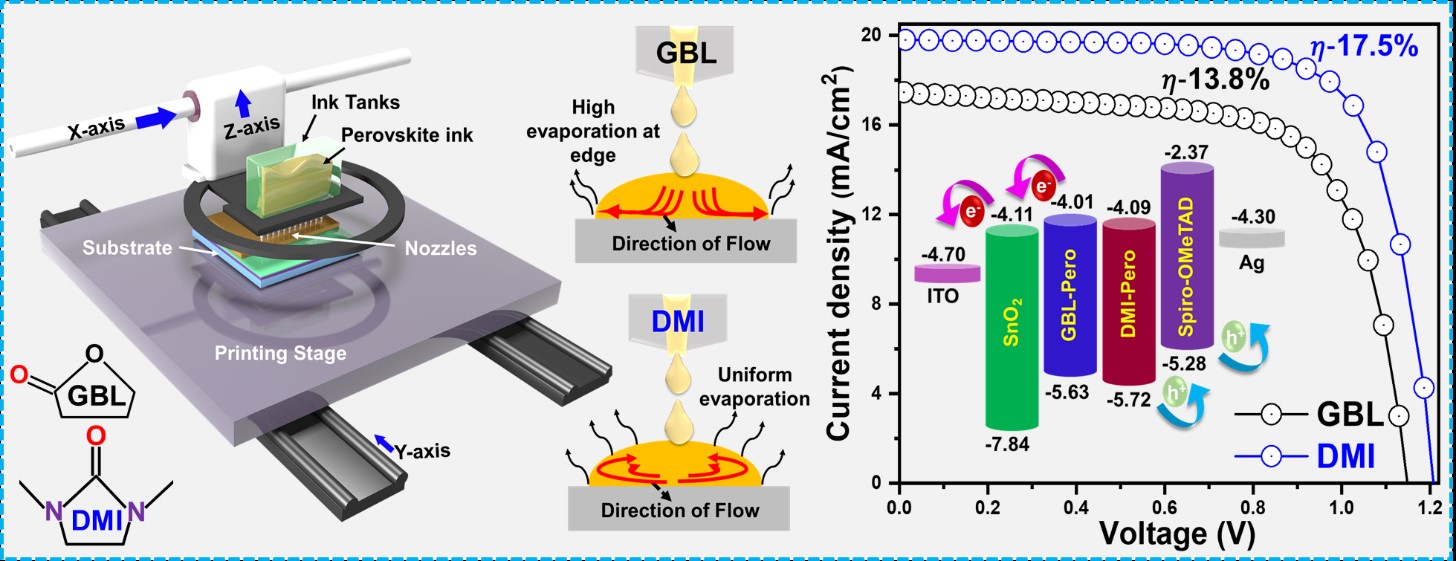- 작성일
- 2024.02.18
- 수정일
- 2024.06.03
- 작성자
- 강재욱
- 조회수
- 82
(183) V.V. Satale, H.B. Lee, B. Tyagi, M.M. Ovhal, S. Chowdhury, A. Mohamed, D.-H. Kim and J.-W. Kang* "Ink engineering using 1,3-dimethyl-2-imidazolidinone solvent for efficient inkjet-printed triple-cationic perovskite solar cells" Chemical Engineering Journal, 493, 152541 (2024)

Graphical abstract
A high boiling point solvent is used to engineer the perovskite ink for efficient, stable inkjet-printed perovskite solar cell (IJP-PSC) devices. The 1,3-dimethyl-2-imidazolidinone (DMI) solvent-based ink exhibited a highly uniform and smoother film, creating larger grains that resulted in efficient charge transfer to electron or hole transport layers. The DMI solvent-based IJP-PSC device showed an impressive power conversion efficiency of 17.50%, with better stability proving its potential for the scalable fabrication of inkjet-printed PSCs.
- 첨부파일
- 첨부파일이(가) 없습니다.
- 다음글
-
(184) K.-J. Ko*, H.W. Cho, H.B. Lee, P.J. Jesuraj, J.-W. Kang*, S.Y. Ryu* "Indium-free, highly flexible semi-transparent organic light-emitting diodes featuring MoO3/Au/MoO3 multilayer anode and cathode" Organic Electronics, 128, 107022 (2024)강재욱 2024-03-06 14:52:25.0
- 이전글
-
(182) H.B. Lee, A. Mohamed, N. Kumar, N.H.Z. Karimy, V.V. Satale, B. Tyagi, D.-H. Kim and J.-W. Kang* "Low-Cost, Scalable Fabrication of Multi-Dimensional Perovskite Solar Cells and Modules Assisted by Mechanical Scribing" in submission (2024.6)강재욱 2024-02-18 02:46:48.0